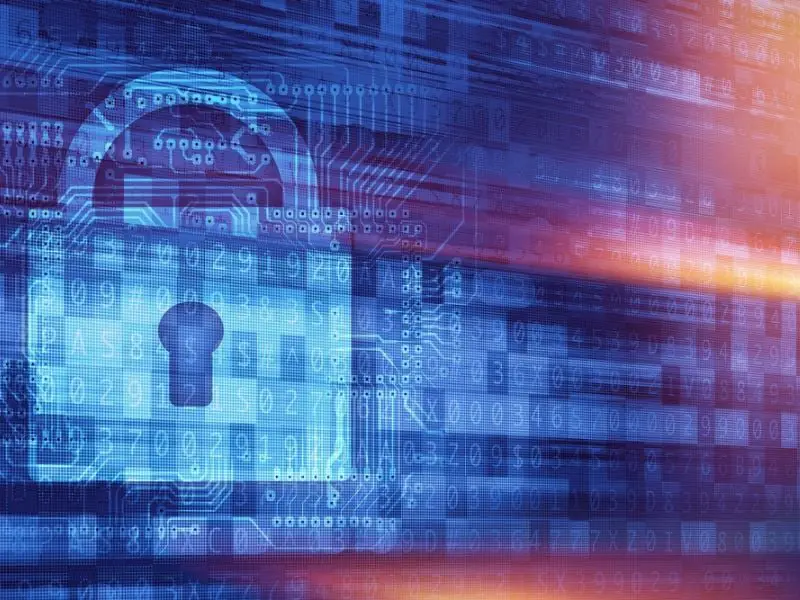Businesses have flourished thanks to blockchain technology, which has introduced unprecedented safety and visibility to any company’s data. Blockchain is a digital, decentralized ledger that records and verifies all business transactions in real time.
Blockchain impacts sustainability for businesses because it correctly tracks and visualizes supply chain activity, reducing waste and inefficiencies.
This post looks deeper at how Blockchain can impact every business sector.

The Nuances of Blockchain Technology
Blockchain technology, at its core, is an intricate blend of cryptography, peer networks, and digital ledgers. However, diving deeper into its components, one can discern the variety of blockchain types, their applications, and their potential.
1. The Foundation: Contracts and Smart Contracts
At the heart of blockchain lies the concept of a ‘contract’. Contracts, particularly smart contracts, are self-executing contracts with the terms of the agreement between buyer and seller being directly written into lines of code. They represent a significant evolution from traditional contracts, fortifying digital transactions and safeguarding them from potential breaches.
When one delves into Ethereum’s programming language, Solidity, they come across a world dedicated to crafting such smart contracts and decentralized applications (DApps). The data section of these contracts holds transactions and other critical information, neatly stored within blocks.
2. Public vs. Private Blockchains
Blockchains, in essence, can be broadly classified into two main categories: public and private.
- Public Blockchains: These decentralized networks are open for all. Anyone can request or validate a transaction, ensuring transparency and accessibility. Bitcoin and Ethereum (ETH) are two widely recognized examples. These blockchains employ consensus mechanisms like proof-of-work or proof-of-stake for validation.
- Private Blockchains: Tailored for businesses and organizations, private blockchains offer a more customized experience. They operate on closed networks, granting accessibility based on set permissions. It’s essential to note that these blockchains are managed by a single authority.
- Hybrid Blockchains: Merging the best of both worlds, hybrid blockchains are both transparent and private, depending on their parts. While some sections remain open for public viewing, others remain exclusive to certain participants.
3. The Peer-to-Peer Network
One of the unique attributes of blockchain technology is its peer network. It eliminates the need for intermediaries. Unlike traditional financial institutions that operate during specific business hours, the blockchain network is awake around the clock. With its combination of cryptographic keys and a shared ledger, it ensures that every transaction made is secure and tamper-proof.
4. Digital Ledger: The Secure Storage
Think of a digital ledger as a highly secure Google spreadsheet, available across numerous computers in a network. Every transaction is authenticated by a digital signature, making it nearly impossible to alter. This decentralized system of recording transactions gives all participants complete transparency.
“Blockchain’s digital ledger provides a secure and tamper-proof way to store and share information, making it an ideal solution for storing sensitive data and ensuring data integrity.”
– IBM
5. Beyond Finance: Broadening Applications
While initially created for financial transactions, blockchain’s potential doesn’t stop there. The technology can store medical records, offering a secure and immutable method for healthcare providers. Patients can rest easy, knowing their medical history remains unaltered. Furthermore, future blockchains aim to store property rights, legal contracts, and other essential documents.
6. Concerns and the Road Ahead
With its numerous advantages, the blockchain network is not without its concerns. Networks like Bitcoin have faced criticism for their high electricity consumption. Moreover, scalability remains a challenge, with growing global capacity sometimes causing speed inefficiencies.
However, the continued evolution and adoption of blockchain technology promise a future where transactions are more secure, transparent, and efficient.
As blockchain technology continues to evolve, it’s crucial to understand its nuances, from smart contracts to different types of blockchains and their applications in various sectors. The road ahead for blockchain looks promising, with endless opportunities for innovation and growth.
Understanding Consensus Mechanisms and Their Significance
The seamless functioning of blockchain networks, be it public or private, hinges on consensus mechanisms. These mechanisms form the backbone of blockchain systems, ensuring uniformity and validating transactions.
Proof-of-Work (PoW) and Proof-of-Stake (PoS)
Two of the most prominent consensus mechanisms include Proof-of-Work (PoW) and Proof-of-Stake (PoS). Public blockchains, such as Bitcoin, primarily use PoW. It requires participants, often termed ‘miners’, to solve complex mathematical problems. Once solved, the solution is shared with the network, and the transaction is validated.
On the other hand, PoS is a more energy-efficient approach. Instead of relying on computational power, it depends on the number of coins or stake a participant holds. Those with higher stakes have a greater chance of validating a block of transactions.
Role in Decentralized Networks
Consensus mechanisms are pivotal in maintaining the integrity of decentralized networks. They prevent potential attacks, like double-spending, ensuring that every asset on the blockchain ledger is uniquely identified and tracked. The consensus algorithms work tirelessly, ensuring that all nodes in the network have an identical version of the digital ledger.
Emerging Consensus Mechanisms
As blockchain technology evolves, so do its consensus mechanisms. Newer methods are being developed to address the environmental concerns associated with PoW and to make the process more inclusive and democratic. Some emerging mechanisms include Delegated Proof-of-Stake (DPoS) and Proof-of-Authority (PoA).
Implications for Financial Institutions
While blockchain operates ceaselessly, traditional financial institutions have set operating hours. The constant evolution of consensus mechanisms seeks to make blockchain not just a 24/7 operation but also more energy-efficient and environmentally friendly. As these mechanisms become more sophisticated, they can potentially offer solutions that challenge the conventional frameworks of financial institutions.
Consensus mechanisms are more than just technical jargon. They represent the heart and soul of blockchain networks, ensuring their robustness, security, and overall reliability. As we delve deeper into the blockchain realm, the importance of understanding and innovating these mechanisms becomes even more paramount.
How Can Blockchain Boosts Sustainability in Business Practices
The idea of a circular economy is essential to ensuring that business practices are sustainable. So, this means:
- Minimizing waste
- Reusing products
- Recycling materials as far as possible
Blockchain may greatly assist with this by guaranteeing transparency and traceability. This helps an organization sanitize its supply chains by eradicating phony and counterfeit items, decreasing the detrimental effect on scarce natural resources.
In terms of the supply chain, blockchain technology has a beneficial impact on all stages of:
- Manufacturing
- Logistics
- Disposal
It helps businesses in optimizing operations and increases efficiency. This has a significant influence on supporting sustainable company growth in terms of waste reduction and resource conservation.
Features of Blockchain
The power and capabilities of blockchain technology are helping to make sustainability efforts with a significant impact. Blockchain’s ability to connect stakeholders and technology is helping it disrupt several sectors, including energy and finance. Here are some features of Blockchain that allow data to be stored and shared transparent, accurately, and securely.
1. It Is a Decentralized Database
Blockchain has no regulatory body; instead, groups of nodes (miners) from all over the world work together for its integrity and security.
It uses cryptography to record each transaction on the Blockchain permanently.
Businesses use blockchain technology to accurately and transparently trace the movement of commodities from their point of origin to the final consumer.

“Blockchain is a decentralized database that allows multiple parties to access, verify, and share data without the need for a central authority or intermediary.”
– Deloitte
2. It Is Trustless
Blockchain provides a trusted and accountable system. Everyone is aware of the details of every transaction since they are all open to public scrutiny. This feature helps businesses to facilitate the tracking of every fund for environmental initiatives.
3. It Is Safe and Secured by Computers Around the World
Blockchain is a safe and efficient technology that minimizes carbon footprint by simplifying interactions between parties. It is also secure and transparent, which means that nobody can alter the data kept on the Blockchain.
4. It Is Tamper-Proof and Has No Alterations Ever
Since Blockchain is immutable, it facilitates traceable, quick, and secure transactions throughout the chain. This aids businesses in reducing their environmental effect and combating fraud.
Essential Ways in Which Blockchain Technology Promotes Eco-Friendly Business Practices
To better understand how Blockchain can support businesses, here are vital qualities that can make this possible.
1. Decentralized Control
As blockchain technology is all about decentralized governance and decision-making, nobody will be able to exert undue influence over the system.
Thus, waste and inefficiency are considerably reduced, resulting in a sustainable company ecology.

2. Transcends Transparency Which Boosts Sustainable Growth
Commercial entities can efficiently account for greenhouse gas emissions with blockchain technology that records and provides information about emission reductions. This may help avoid duplicate counting, which can skew reported numbers.
With blockchain technology, environmental best practices may be adhered to more strictly.
3. Blockchain Technology Promotes Green Finance
Blockchain technology helps companies accomplish their sustainability objectives by facilitating crowdsourcing and peer-to-peer financial transactions in support of climate change projects,
This will help earn the trust of a much larger number of investors, who will be able to see how their funding is being used in real time.

4. Promotes Recycling Programs
Blockchain encourages recycling. Organizations may achieve this by implementing a recycling program and offering cryptographic tokens as financial incentives.
These might be offered in return for bottles and other recyclables. This system will not only assist in monitoring things like cost, volume, and revenue, but it will also enable one to assess the environmental effect of a person or company.
“Blockchain has the potential to transform recycling programs by creating a secure and transparent platform for tracking and verifying recycling activities, promoting sustainability, and reducing waste.”
– Cryptopolitan
5. Provides Affordable, Sustainable Energy
The use of distributed ledger technology, often known as Blockchain, to control renewable energy generation is an intriguing and potentially fruitful technique to improve operational efficacy and reduce operating expenses.
Systems based on blockchain technology have the potential to make improved cooperation between consumers and utility providers easier. For instance, researchers at NREL are attempting to build software that will allow customers to regulate the production of power in their own homes and redirect some of that electricity back into the grid.
Author’s Note
In many industries worldwide, sustaining operations on a sustainable basis is entirely impossible. In the deforestation industry, for example, this is a well-known fact. There are not enough trees in the world to sustain agricultural or forestry operations without it taking a toll on the environment and the local wildlife. And this is where Blockchain comes into the mix.
Blockchain is a technology geared towards experimenting with new ideas in high tech. It has proven its usefulness and popularity in industries as diverse as finance, healthcare, and e-commerce, and with good reason, too.
Blockchain is now being explored by many environmentalists and government officials who hope to use it to tackle the environmental crisis that is currently happening all around the world. These parties believe that Blockchain could provide significant support for many sustainability efforts. In the same way, it has been able to support many other industries integrating the system.
Next Read: Sustainability Branding, Biggest Environmental Problems, and Solutions, How to Achieve Economic Sustainability

